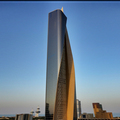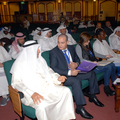
-
This is the exercise book accompanying Pressure Control During Drilling
Porous sedimentary formations penetrated by the rock bit contain fluids such as oil, gas or salt water. If the hydrostatic pressure of the drilling fluid drops below the formation pore pressure, pore fluid will enter the well and “kick” the mud out of the well. To control the pressure while drilling you need to understand the behavior of gas. This book aims at explaining the physics and the engineering approaches behind pressures in the sediments, detection of unstable wellbores, equipments necessary to close and kill the well, killing methods and offshore challenges.
- Content :-
- Formation Pressure
- High pore pressure zone
- Porosity. Overburden. Sonic log
- Porosity. Overburden. Sonic
- Pore pressure detection
- Pore pressure, dc
- Pore pressure detection. dc Overlay curves
- Fracture pressure. LOT
- Fracture pressure from field data
- Killing operation
- Preparing for kick
- Safety margin
- Kill sheet. W & W. Conventional. Fracturing
- Engineer’s method. Conventional. Pressure in 3 situations
- Driller’s. Conventional. Pressure in 6 situations
- Killing. Fracturing. W & W. Conventional
- Killing. Fracturing. W & W. Conventional
- Is conventional killing acceptable?
- Killing operation. Modified due to high choke line friction
- Driller’s. Modified due to high choke line friction
- Engineer’s. Modified. Pressure in situation # 2 and 3
- Modified. Stop in operation
- Modified. More realistic drill string
- Modified. More realistic drill string
- Modified and volumetric
- Volumetric method
- Comparing 3 Killing methods. Annular friction included.
- More realistic gas behavior
- Gas transport and percolation
- Wellbore pressure during 2-phase flow
- Gas solubility
- Gas solubility
- Deep water and cementing issues
- Cold water issues
- SWF
- Cementing operations
- Supportive information
- Solution Section
- Formation pressure
- High pore pressure zone
- Porosity. Overburden. Sonic log
- Porosity. Overburden. Sonic
- Pore pressure detection.
- Pore pressure, dc
- Pore pressure detection. dc overlay curve
- Fracture pressure. LOT
- Fracture pressure from field data
- Killing operation
- Preparing for kick
- Safety margins
- Kill sheet. W & W. Conventional. Fracturing
- Engineer’s. Conventional. Pressure in 3 situations
- Driller’s. Conventional. Pressure in 6 situations
- Killing. Fracturing. W & W Conventional
- Killing. Fracturing. W & W. Conventional
- Is conventional killing acceptable?
- Killing operations. Modified for high choke line friction
- Driller’s Modified due to high choke line friction
- Engineer’s. Modified. Pressure in situation #2 and 3
- Modified Stop in operation
- Modified. More realistic drill string
- Modified. More realistic drill string
- Modified and volumetric
- Volumetric method
- Comparing 3 Annular friction included killing methods
- Gas behavior
- Gas transport and percolation
- Wellbore pressure during 2-phase flow
- Gas solubility
- Gas solubility
- Deep water and cementing issues
- Cold water issues
- SWF
- Cementing operations














